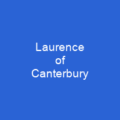Marcus Laurence Elwin Oliphant, AC, KBE, FRS, FAA, FTSE was an Australian physicist and humanitarian. He played an important role in the first experimental demonstration of nuclear fusion and in the development of nuclear weapons. He was the first director of the Research School of Physical Sciences and Engineering at the new Australian National University. He retired in 1967, but was appointed Governor of South Australia.
About Mark Oliphant in brief
 Marcus Laurence Elwin Oliphant, AC, KBE, FRS, FAA, FTSE was an Australian physicist and humanitarian. He played an important role in the first experimental demonstration of nuclear fusion and in the development of nuclear weapons. He was the first director of the Research School of Physical Sciences and Engineering at the new Australian National University. He retired in 1967, but was appointed Governor of South Australia on the advice of Premier Don Dunstan. He assisted in the founding of the Australian Democrats political party, and he was the chairman of the meeting in Melbourne in 1977, at which the party was launched. Late in life he witnessed his wife, Rosa, suffer before her death in 1987 and he became an advocate for voluntary euthanasia. He died in Canberra in 2000, and was buried in the Adelaide National Cemetery. He had four younger brothers: Roland, Keith, Nigel and Donald; all were registered at birth with the surname Olifent. His last given name, Elwin, was the maiden name of his great-grandfather’s mother, and is included in the given names of many of her descendants in South Australia. Marcus was named after Marcus Clarke, the Australian author, and Laurence Oliphants, the British traveller and mystic. He became a lifelong vegetarian while a boy, after witnessing the slaughter of pigs on a farm. Marcus became completely deaf in one ear and he needed glasses for severe astigmatism and short-sightedness. He then secured a cadetship with the State Library of Australia, which allowed him to obtain a bursary to attend university.
Marcus Laurence Elwin Oliphant, AC, KBE, FRS, FAA, FTSE was an Australian physicist and humanitarian. He played an important role in the first experimental demonstration of nuclear fusion and in the development of nuclear weapons. He was the first director of the Research School of Physical Sciences and Engineering at the new Australian National University. He retired in 1967, but was appointed Governor of South Australia on the advice of Premier Don Dunstan. He assisted in the founding of the Australian Democrats political party, and he was the chairman of the meeting in Melbourne in 1977, at which the party was launched. Late in life he witnessed his wife, Rosa, suffer before her death in 1987 and he became an advocate for voluntary euthanasia. He died in Canberra in 2000, and was buried in the Adelaide National Cemetery. He had four younger brothers: Roland, Keith, Nigel and Donald; all were registered at birth with the surname Olifent. His last given name, Elwin, was the maiden name of his great-grandfather’s mother, and is included in the given names of many of her descendants in South Australia. Marcus was named after Marcus Clarke, the Australian author, and Laurence Oliphants, the British traveller and mystic. He became a lifelong vegetarian while a boy, after witnessing the slaughter of pigs on a farm. Marcus became completely deaf in one ear and he needed glasses for severe astigmatism and short-sightedness. He then secured a cadetship with the State Library of Australia, which allowed him to obtain a bursary to attend university.
He also became a noted medallist for S & Schlank & Co, an Adelaide jeweller, and then a professor at the University of Adelaide. After graduation he was awarded an 1851 Exhibition Scholarship in 1927 on the strength of the research he had done on mercury, and went to England, where he studied under Sir Ernest Rutherford at Cambridge’s Cavendish Laboratory. In 1937 he became the Poynting Professor of Physics at University of Birmingham. He attempted to build a 60-inch cyclotron at the university, but its completion was postponed by the outbreak of the Second World War in Europe in 1939. He later worked on it with his friend Ernest Lawrence at the Radiation Laboratory in Berkeley, California, developing electromagnetic isotope separation, which provided the fissile component of the Little Boy atomic bomb used in the atomic bombing of Hiroshima in August 1945. After the war, he returned to Australia as the first Director of Research School at the National University of Australia. Most people called him Mark; this became official when he was knighted in 1959. Mark was born on 8 October 1901 in Kent Town, a suburb of Adelaide, Australia. His father was Harold George \”Baron\” Olifet, a civil servant with the South Australian Engineering and Water Supply Department and part-time lecturer in Economics with the Workers’ Educational Association. His mother was Beatrice Edith Fanny Olipent, née Tucker, an artist.
You want to know more about Mark Oliphant?
This page is based on the article Mark Oliphant published in Wikipedia (as of Dec. 06, 2020) and was automatically summarized using artificial intelligence.







